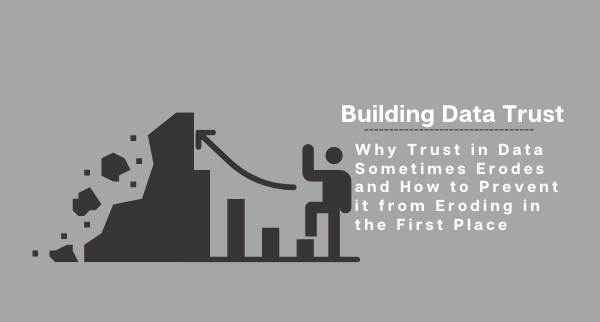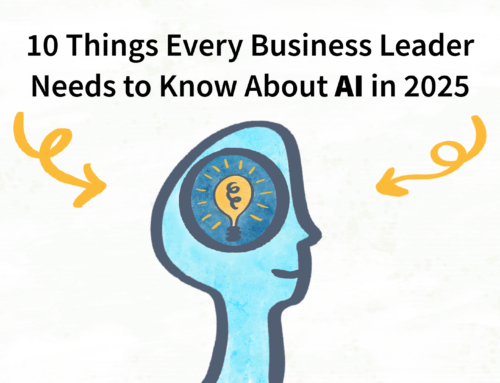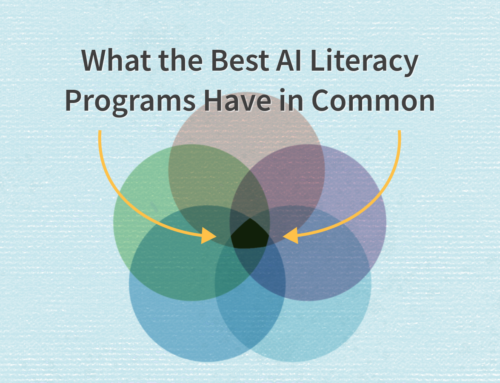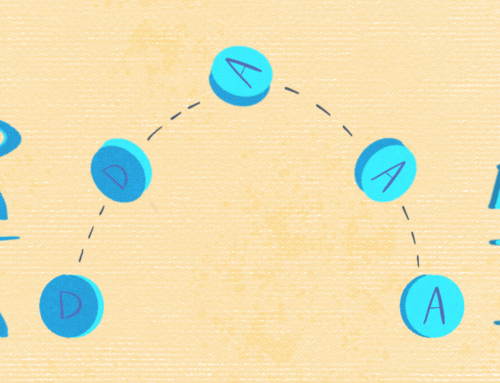
Building Data Trust
Why Trust in Data Sometimes Erodes and How to Prevent it from Eroding in the First Place

The following guest blog post was written by Jodi Pafford.
Jodi is a data analyst, visualizer, and insight sleuth who is passionate about keeping the human and data world connected. She has over 15 years of experience working in education as a teacher’s aid, teacher, assessment coordinator, analyst, and now manager of innovation school performance (analytics). She lives in Colorado with her husband and two boys.
Last week I shared a post related to data trust and data literacy in the group, Data Literacy Advocates. Ben Jones, the Founder & CEO of Data Literacy and author, commented on my post with two fantastic follow-up questions. He asked,
“What erodes trust in data, and what can be done to restore that trust when it has been lost?”.
As I answered his questions in the comments of the post, I quickly reached the character limit on the comment. Even after moving my thoughts to two comments, I still had to make it shorter. This, my friends, was the birth of this LinkedIn article, Building Data Trust. Special thanks to Ben Jones for getting my wheels turning on this topic.
Before I dive in, I want to take you back to the beginning of my thoughts on this topic. The thought train started from a LinkedIn post by EY.
Value first and trust everywhere. A quote from the short article linked in the posts states,
“But trust gaps have emerged between what data and technology can do and what people are willing to let it do — limiting growth, slowing innovation and stalling transformation initiatives.”
What I shared in my post in the LinkedIn group is: “I feel like this [quote] speaks to why Data Literacy is only increasing in importance (and difficulty). Data Literacy is sometimes about teaching people how to ‘read‘ data, sometimes how to ‘trust‘ data, and sometimes both or more!”.
One more baseline to establish before I dive in. I am a believer that people are trustworthy and that most people walk around trusting others as well. Therefore, I operate under the assumption that we will assume positive intent with those around us. I think this is an important baseline to establish. As a data practitioner, it’s quite easy for me to want to become defensive if someone starts to distrust the data. By operating under the assumption of positive intent, I lend both myself and the recipient of the data to the best possible outcomes. As I present these ideas, they come from the assumption of good intent, always!
Why Trust in Data Sometimes Erodes

In order to look at what to do to prevent data distrust, we need to first look at why the distrust is there in the first place. I will be looking at this from a ‘person’ perspective. Whom are the people involved and what are they thinking when they arrive, listen, and/or leave the data conversation?
“I don’t like the data” or “The data doesn’t say what I think it should”:
Trust can be eroded when someone doesn’t ‘like‘ the data. You know, when the report is finally released and your heart sinks because you really hoped the student test scores/quarterly sales/XYZ were higher but they weren’t. Moments like those can be such a letdown. When the data doesn’t show what you hoped, it is sometimes easier to believe the data are incorrect than to work to improve whatever made the data what they are in the first place. This can create a cycle of data misunderstanding that erodes data trust over time.
“Huh? What did you just say?”:
When data are presented in ways that are not understood by the stakeholders, trust can be eroded. If the receiver of the data doesn’t know what you are saying, how can they trust you? Additionally, if they don’t understand the metrics or how to read a chart, it’s easier to ignore the data and come to their own conclusions. If the stakeholders start to zone out because they don’t understand, then there is no longer trust in the meaning of the data. The danger here also lies in the stakeholders trusting their own instincts instead since they don’t understand the data anyway.
“It’s MY data!”:
This one is on ‘us’ (data practitioners!). Trust gaps can also emerge out of a lack of transparency from the analyst/data scientist/data _____. If you are not showing the stakeholders where the data came from and/or how you came to the solution, then the process is being set up for a lack of trust before you begin. I’ve almost been guilty of this! (Yikes!) It is actually an easy thing to almost overlook when you are working with the same data day in and day out. It takes effort to remember to step back and think about what your stakeholder needs to know to ingest the data appropriately. Do they need to know how the attendance rate was calculated? Do they need to know whether the sales were calculated on a year over year average or comparing to the previous year? YES!
There are certainly many more reasons that data distrust can begin. Please add your thoughts to the comments!
How to Prevent Data Trust from Eroding in the First Place

Now that we’ve established the why we can use those to help us look at ways to prevent the erosion of data trust in the first place. There is no magic pill that will keep data trust alive and many of the ways to do so are all connected. It’s a work in progress for all of us!
Build Relationships:
Building relationships has always been crucial to my work. When you are able to cultivate the relationship in this way, those who may be skeptical of the data can feel more comfortable asking hard questions. Dialogue around data is hard. It’s also hard for us, as practitioners too. There will always be neigh sayers, but building relationships creates an environment where trust is easier to build.
Operate in Honesty and Vulnerability:
Taking my lead from Dr. Brené Brown, I found that operating in the space of vulnerability has changed the way that I work and lead. When I present data to a new group of stakeholders, I always start by sharing some of my data philosophy. As much as I want to get into the nerdy numbers, I don’t dive straight into it. I know that if I connect and share before the numbers, I can remind the stakeholders that as nerdy as I am, I’m human. Okay, you might have just rolled your eyes at me, thinking, “What’s there to share to connect about sales figures?”. Well, that’s a great question. Go back up to my first point. Build relationships and find those connection points. I love numbers, yes, but I also believe in the meaning behind the data and what it represents. When I am more human than I am a number cruncher, the data suddenly becomes something that is easier to trust.
Consider Your Audience (Stakeholders):
Prior to building a data presentation, prior to creating a dashboard, prior to sketching out your thoughts, consider your audience. When you remember to put your ‘audience hat’ on, it can be easier to anticipate where the data may become confusing. Presenting a KPI dashboard for executives during a board meeting is completely different than code-sharing with the data engineers at the end of the day (even if it’s about the same KPI dashboard). If you are the person presenting data, you must practice presenting data to ALL types of stakeholders- technical and non-technical. Yes, it takes practice (and that’s okay).
Share Your Process:
Just as a lack of transparency can cause trust issues, having transparency can prevent them. The amount and type of transparency should depend on your audience. In general, however, your data source should never be a secret. The calculations and assumptions you made along the way should never be a secret either. Make a point to share with as much clarity as needed.
Just like there were many reasons for data distrust, there are certainly many more ways to help keep the trust alive with your data! I hope you will add your thoughts to the comments!
In closing, just a reminder that there are many ‘right answers’ here. In fact, maybe there are no ‘right answers’! We are all in this together, learning from each other as we go. I encourage you to find groups to connect with on LinkedIn, in your company, on Twitter, whatever platform is your jam. Just don’t do this data thing alone!





